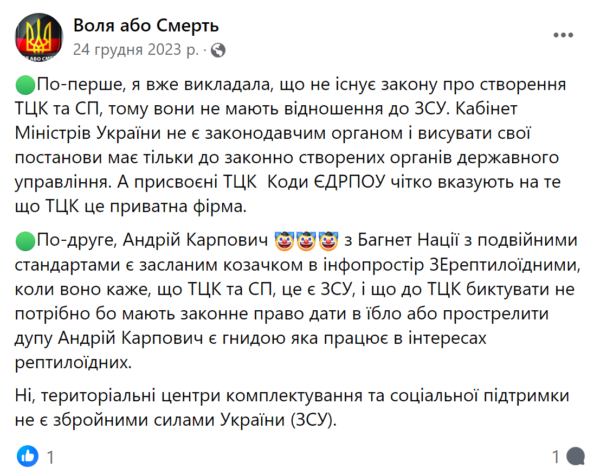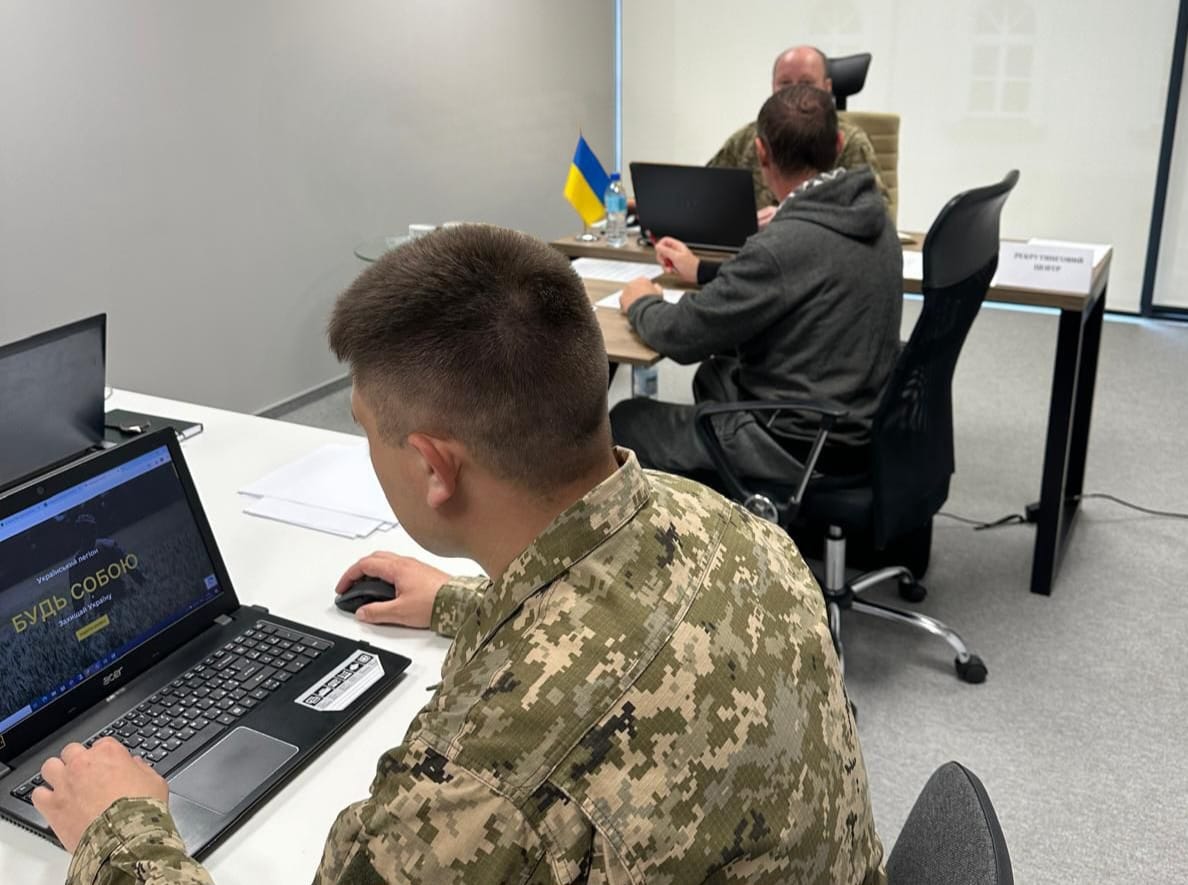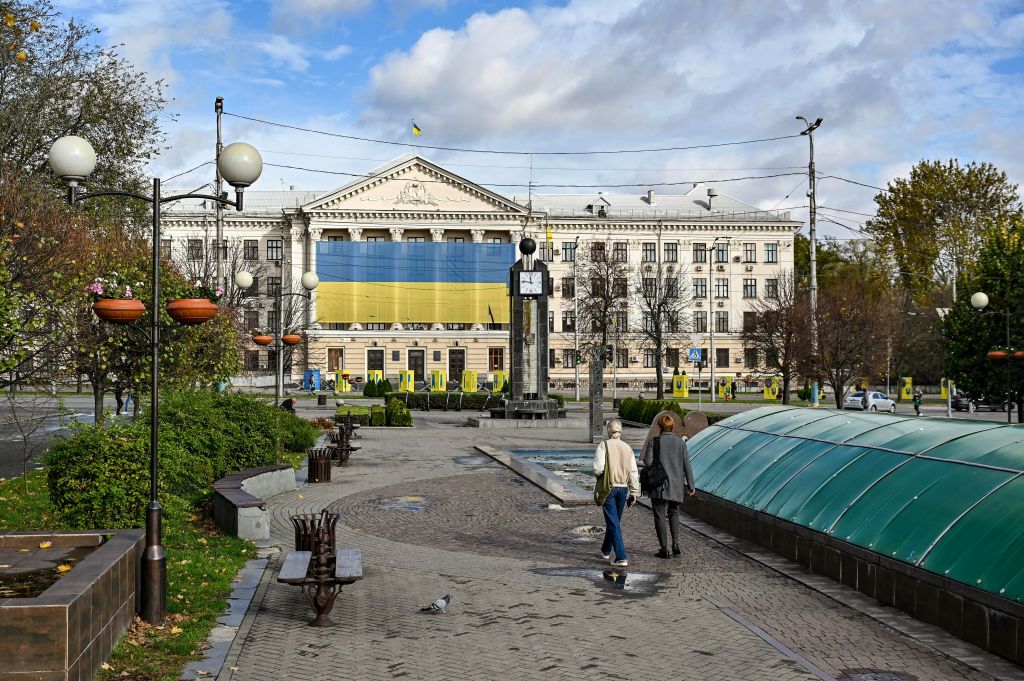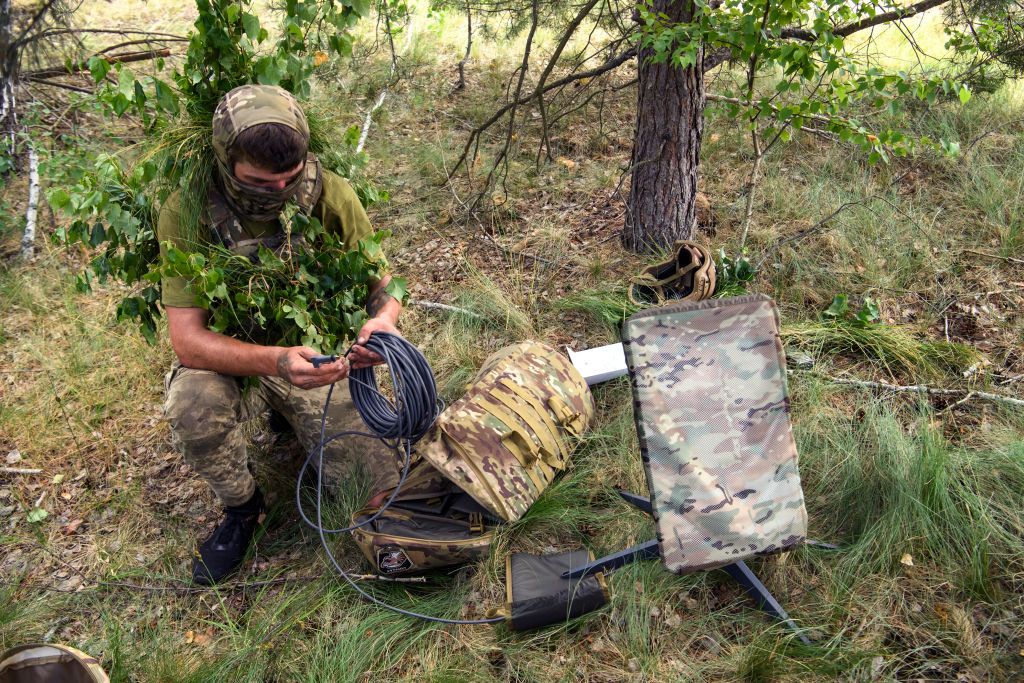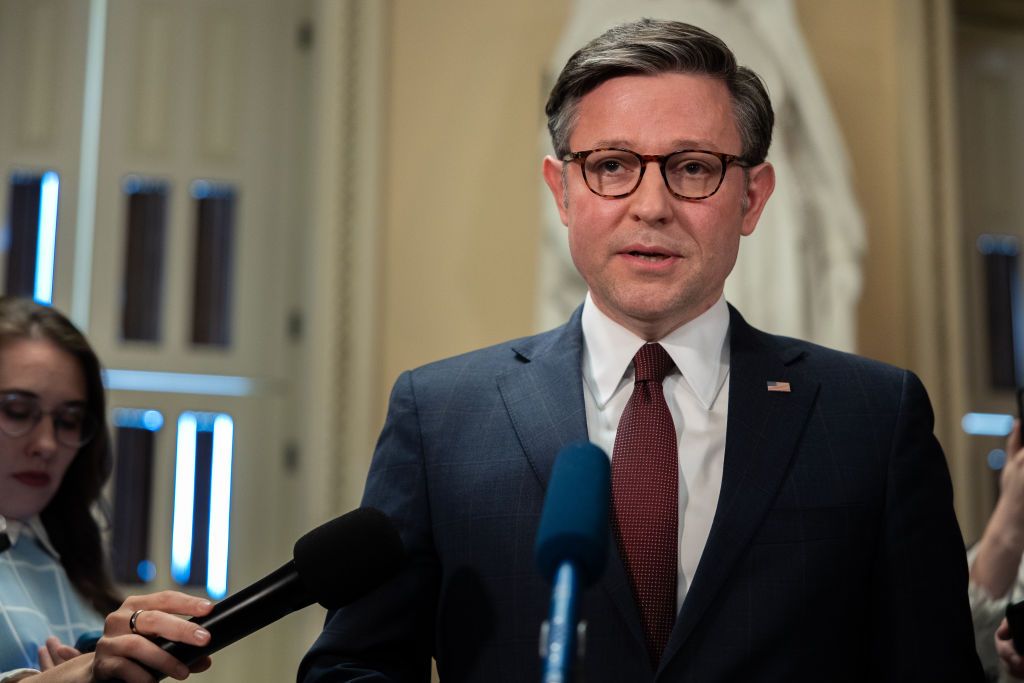They have also promoted narratives about ‘civil conflict’ and ‘war between oligarchs’, suggesting that average Ukrainians avoid participating in mobilisation. KGB-style active measures, such as ‘wives and mothers’ rallies’ or ‘anti-war pickets,’ have aimed to block the work of military enlistment offices. In 2016, the mobilisation of reservists stopped. On 24 February 2022, due to the full-scale invasion, President Volodymyr Zelenskyy announced a general mobilisation. A new Russian campaign to disrupt it began almost immediately.
Key anti-mobilisation messages
An important element of this disinformation campaign is that anti-mobilisation messages should contain a kernel of truth, and ideally be spread organically by affected Ukrainians. These messages include:
- mobilisation is illegal due to Ukraine’s ‘wrong’ martial law, as opposed to a ‘correct’ state of war;
- Territorial Recruitment and Social Support Centres (TRCs) are not part of the Armed Forces but ‘private companies’, and therefore are not authorised to mobilise people;
- someone else should fight besides mobilised civilians such as MPs, civil servants, policemen, customs officers, border guards, judges, professional/contract soldiers, and so on;
- TRCs are corrupt because the rich use bribes to avoid mobilisation while the poor have to serve;
- the Armed Forces are suffering heavy losses and commanders do not protect the lives of their soldiers, so those mobilised are doomed to die;
- it is not worth fighting for a corrupt authority that violates the rights of citizens and closes borders;
- the Russian army is invincible and resisting is pointless.
Manipulative messages about ‘illegal’ mobilisation
Since 2022, Kremlin propaganda has aimed to weaken Ukraine’s ability to resist Russian aggression by artificially generating internal conflicts and pitting some groups of citizens against others. In addition to the usual tactic of sowing division between the Ukrainian-speaking and Russian-speaking populations in Ukraine’s west and east, the Kremlin has attempted to create fault lines between internally displaced persons (IDPs) and residents of regions hosting IDPs, between refugees and those who remained in Ukraine, and between civilians and the military.
Demonising TRC employees is particularly harmful because Russia uses the narrative to indirectly discredit the Armed Forces of Ukraine.
The Kremlin assets conducting these psychological operations exploit natural human fears (fear of death, fear of mutilation, and fear of the unknown), as well as the real organisational shortcomings. The Russian authorities carefully monitor the Ukrainian media space for news that it could use to promote anti-mobilisation messages, e.g. allegations about bribery or other possible TRC employee transgressions. The Kremlin also seeks to exploit any news about conflicts involving the military, Ukrainian military losses, or Ukrainian men trying to cross the border illegally.
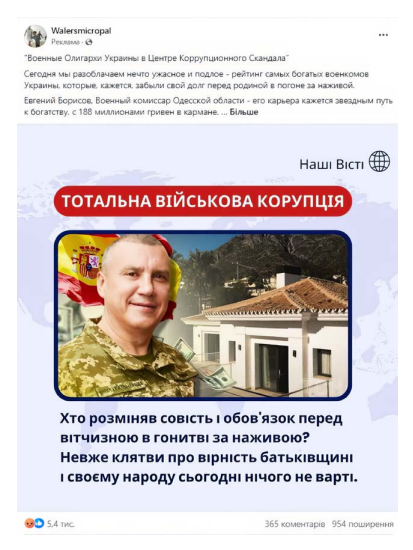
Using the news about corruption in the TRC for anti-mobilisation propaganda on Facebook
Pro-Kremlin disinformation combines anti-mobilisation messages with real facts, manipulation, and fakes to allege that:
- the Ukrainian state is the enemy of its citizens;
- the Ukrainian military poses a danger to civilians;
- since the only losers are those mobilised, avoiding mobilisation is success.
Ultimately, the goal of the Russian anti-mobilisation operation is to influence the behaviour of Ukrainians. During 2022-23, the information manipulation operation has aimed to popularise passive evasion through ignoring military registration, avoiding contacts with TRCs, and creating fictitious grounds for obtaining a postponement. From the end of 2023 to the beginning of 2024, these narratives became more noticeable.
How it works
To carry out this information manipulation operation, the Kremlin uses combined methods which include the Russian influence networks operating in Ukraine; media resources such as websites, profiles in social networks, and Telegram-channels; bot farms; and troll factories. In 2022, dozens of regional Telegram-channels were created to spread messages about locations where TRC employees were allegedly issuing mobilisation summonses.
The disinformation machine uses political and popular topics on Ukraine social networks for its own purposes. Just between March and November 2023, research conducted by the Centre for Strategic Communications and Information Security and the Centre for Democracy and Rule of Law discovered 596 advertising messages with disinformation and Russian propaganda targeting Ukrainian audiences were discovered. 136 and 82 of them, respectively, for a total of almost 37% promoted Russian messages about the frontline and mobilisation in Ukraine.

Russian propagandists use TikTok as an entry point into the Ukrainian media space. Researchers at the Texty.org.ua project concluded that the recommendation algorithms of this social network, like others, start promoting videos before moderation algorithms responsible for blocking and removing content process them. Ukrainian TikTok users, then, have a high chance of seeing Russian disinformation and propaganda with popular hashtags even if they are not subscribed to pages with such content.
In mid-July, the hashtag #ТЦК (TRC) was the most popular hashtag in the Ukrainian TikTok market.

The most popular hashtags of the Ukrainian TikTok market in mid-July (Yulia Dukach/Facebook)
Most content with this hashtag is aimed at discrediting the mobilisation in Ukraine. In July, the top 10 most popular hashtags included the following anti-mobilisation hashtags: #стоптцк (stop TRC), #народпротитцк (people against TRC), #спротивтцк (resistance against TRC), #протесттцк (protest against TRC), and the anti-state hashtag #ценемояукраїна (Ukraine is not my country).

Anti-mobilisation TikTok videos with popular hashtags
They mostly accompany videos, both real and staged, with conflicts involving TRC personnel as well as abuse stories and instructions on how to avoid mobilisation. Some stories are taken out of context or simply feature unfortunate quotes from military interviews about the need for mobilisation.

Popular hashtags of the Ukrainian TikTok market in July
Setting fire to military vehicles in Ukrainian cities and featuring media coverage of such events are two methods for resisting mobilisation. According to an investigation by the Important Stories publication, at the beginning of June, advertisements appeared on Russian-language forums on the darknet, particularly on the Hydra Market, offering monetary rewards for setting fire to TRC cars. Hydra specialises in drug trafficking and other illegal operations and periodically changes its address on the Tor network.

Advertisement offering a reward for burning cars (Important Stories)
The Security Service of Ukraine and the Prosecutor General’s Office reported the arrest of suspects in such burnings. They received assignments via Telegram. Videos and photos of burned military vehicles have been circulated through Russian media networks as evidence of ‘popular resistance’ to mobilisation. In particular, TikTok videos are accompanied by the hashtags listed above.
Propaganda resources, including Russian state-controlled outlets, amplify these incidents to create stories about ‘popular resistance’ to the mobilisation and an alleged ‘confrontation of Ukrainians with the authorities’ and with President Volodymyr Zelenskyy personally. In particular, on 21 July, the TASS Russian State News Agency distributed what it claimed were interviews with members of the ‘pro-Russian resistance’ in Ukraine. The article said that setting fire to military vehicles and relay boxes, a classic example of transport infrastructure sabotage, is supposedly an ‘act of resistance’ by men to be mobilised.

TASS article about burning cars as an ‘act of resistance to mobilisation’
Over the next three days, the story was shared by more than 40 Russian and pro-Kremlin resources including Telegram channels, Facebook pages, and websites. About 40 more messages were published on the Russian VKontakte and Odnoklassniki social networks.

The intensity of the information spread about car-burning as an ‘act of resistance to mobilisation’ on Telegram, Facebook, and websites
Russian propaganda tries to include incidents that resonate with people, e.g. content related to violence and suicide attempts, in anti-mobilisation narratives. On 18 July, a woman set herself on fire near the courthouse in the Bila Tserkva district of the Kyiv region. Russian propaganda sources presented it as an ‘act of resistance’ because the court allegedly did not grant her husband a mobilisation postponement.

Identical fake news about self-immolation in Russian and pseudo-Ukrainian Telegram-channels
The fake is obvious because mobilisation postponements can only be issued in a TRC , not in courts. Over 40 Russian and pro-Russian websites and Telegram-channels spread this fake within three days (monitoring tools detected 50 messages).

The spread intensity of a fake about a woman’s self-immolation because of her husband mobilisation on Telegram and websites
The dissemination of the fake continued even after police provided an official explanation that the court was considering a case regarding the rights of a woman and a man to have custody of their child.
Video: Police report on the self-immolation of a woman
The Kremlin uses agents of influence to disrupt Ukraine’s mobilisation, often under the guise of journalistic or human rights activities. These agents create networks to organise opposition to mobilisation while discrediting the state and the military. At the end of July, the Security Service of Ukraine detained the head of one of these networks and his accomplices. They are suspected of creating and distributing content with calls for armed resistance to TRCs, publishing military personnel personal data, and other actions subject to Art.114-1 of the Criminal Code of Ukraine that forbids obstructing the lawful activities of the Armed Forces of Ukraine.
Conclusions
Russia is determined to weaken Ukraine’s defence capabilities. Therefore, its efforts aim to disrupt Ukrainian mobilisation. For this, the Kremlin uses the entire arsenal of Russian state security services’ methods and propagandists to create, coordinate, and distribute disinformation, information manipulation, false news, agent recruitment, and sabotage. They use a combination of complementary tools. Russia is trying to convince Ukrainians that their real enemy is not the aggressor but their own state. Its disinformation spreaders undermine trust in the Armed Forces and generate internal conflicts, with the hope of turning such conflicts into a violent confrontation. Even when that confrontation does not occur, with the help of the media, they create the illusion that a confrontation is al
The post How Russian special information operations try to undermine mobilisation in Ukraine appeared first on EUvsDisinfo.
Content Original Link:


